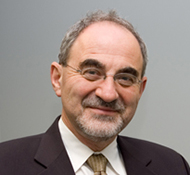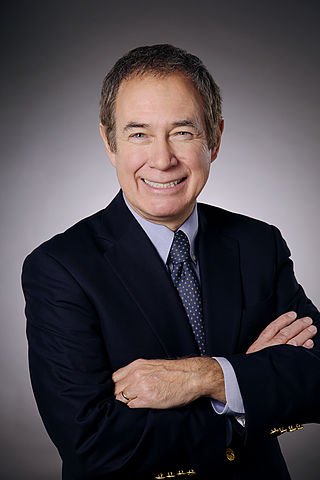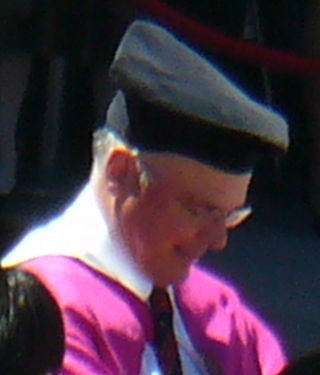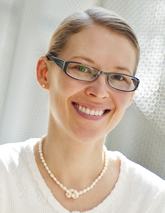Chen Yung-Jui received his BS in Physics from National Tsing Hua University in 1969 and Ph.D. in Physics at the University of Pennsylvania (1976). After a brief postdoctoral period at Penn, he joined the Advanced Microelectronic Laboratory at McDonnell Douglas Astronautics Co. in 1977. From 1980 to 1987, Dr. Chen conducted fiber optical communications related research at GTE Laboratories. During the ten years in industry, he worked on MOS/MNOS VLSI technology, wafer scale integration, Ultra-fast optical spectroscopy, nonlinear optics of semiconductors and organic polymers, integrated optics and optoelectronic devices. In 1987, he moved to academe and became one of the founding faculty members of the Department of Electrical Engineering at University of Maryland, Baltimore County.
Dr. Chen is currently the UMBC Presidential Research Professor, a full professor of Computer Science and Electrical Engineering and the Director of Photonics Technology Laboratory. His group's current research interest covers photonic integrated device design, processing, testing, material sciences and physics, WDM broadband optical communications and networking. Dr. Chen is a fellow of Optical Society of America and Photonics Society of Chinese Americans, senior member of IEEE and member of American Physical Society.

Eli Yablonovitch is an American physicist and engineer who, along with Sajeev John, founded the field of photonic crystals in 1987. He and his team were the first to create a 3-dimensional structure that exhibited a full photonic bandgap, which has been named Yablonovite. In addition to pioneering photonic crystals, he was the first to recognize that a strained quantum-well laser has a significantly reduced threshold current compared to its unstrained counterpart. This is now employed in the majority of semiconductor lasers fabricated throughout the world. His seminal paper reporting inhibited spontaneous emission in photonic crystals is among the most highly cited papers in physics and engineering.
Axel Scherer is the Bernard Neches Professor of Electrical Engineering, Physics, and Applied Physics at the California Institute of Technology. He is also a distinguished visiting professor at Thayer School of Engineering at Dartmouth College. He is known for fabricating the world's first semiconducting vertical-cavity surface-emitting laser (VCSEL) at Bell Labs. In 2006, Scherer was named the director of the Kavli Nanoscience Institute. He graduated from the New Mexico Institute of Mining and Technology in 1985. At Caltech he teaches a very popular freshman lab course on semiconductor device fabrication, Applied Physics 9ab, for which he wrote the textbook for the course.
Ekmel Özbay is a Turkish professor of Electrical and Electronics Engineering and Physics Departments at Bilkent University and the director of the Nanotechnology Research Center, and Space Technologies Research Center (BILUZAY) in Ankara.

Tingye Li was a Chinese-American scientist in the fields of microwaves, lasers and optical communications. His innovative work at AT&T pioneered the research and application of lightwave communication, and has had a far-reaching impact on information technology for over four decades.
Satoshi Kawata is a scientist based in Japan who is active in nanotechnology, photonics, plasmonics, and other areas of applied physics. He is a Professor of Department of Applied Physics at Osaka University. He is also a Chief Scientist at RIKEN. Kawata was the 2022 president of Optica.

Robert Louis Byer is a physicist. He was president of the Optical Society of America in 1994 and of the American Physical Society in 2012.
Rod C. Alferness was president of The Optical Society in 2008.
Ann Catrina Coleman FIEEE FOSA is a Scottish electrical engineer and professor at the University of Texas at Dallas specialising in semiconductor lasers.
Gisele Bennett was a professor at the Georgia Institute of Technology and the Director of the GTRI Electro-Optical Systems Laboratory at the Georgia Tech Research Institute (GTRI). She also founded the Logistics and Maintenance Applied Research Center (LandMARC) at GTRI.

Amnon Yariv is an Israeli-American professor of applied physics and electrical engineering at Caltech, known for innovations in optoelectronics. Yariv obtained his B.S., M.S. and PhD. in electrical engineering from University of California, Berkeley in 1954, 1956 and 1958, respectively.

Benjamin John Eggleton,, is Pro Vice Chancellor (Research) at the University of Sydney. He is also Professor in the School of Physics where he leads a research group in integrated photonics, nonlinear optics and smart sensors and serves as co-director of the NSW Smart Sensing Network (NSSN).

Paul R. Prucnal is an American electrical engineer. He is a professor of electrical engineering at Princeton University. He is best known for his seminal work in Neuromorphic Photonics, optical code division multiple access (OCDMA) and the invention of the terahertz optical asymmetric demultiplexor (TOAD). He is currently a fellow of IEEE for contributions to photonic switching and fiber-optic networks, Optical Society of America and National Academy of Inventors.

David A. B. Miller is the W. M. Keck Foundation Professor of Electrical Engineering at Stanford University, where he is also a professor of Applied Physics by courtesy. His research interests include the use of optics in switching, interconnection, communications, computing, and sensing systems, physics and applications of quantum well optics and optoelectronics, and fundamental features and limits for optics and nanophotonics in communications and information processing.
Junichiro Kono is a professor in the Departments of Electrical and Computer Engineering, Physics and Astronomy, and Materials Science and NanoEngineering, at Rice University.
Govind P. Agrawal is an Indian American physicist and a fellow of Optica, Life Fellow of the IEEE, and Distinguished Fellow of the Optical Society of India. He is the recipient of James C. Wyant Professorship of Optics at the Institute of Optics and a professor of physics at the University of Rochester. He is also a Distinguished scientist at the Laboratory for Laser Energetics (LLE) in the University of Rochester. Agrawal has authored and co-authored several highly cited books in the fields of non-linear fiber optics, optical communications, and semiconductor lasers.

Alexandra Boltasseva is Ron And Dotty Garvin Tonjes Distinguished Professor of electrical and computer engineering at Purdue University, and editor-in-chief for The Optical Society's Optical Materials Express journal. Her research focuses on plasmonic metamaterials, manmade composites of metals that use surface plasmons to achieve optical properties not seen in nature.

Keren Bergman is an American electrical engineer who is the Charles Batchelor Professor at Columbia University. She also serves as the director of the Lightwave Research Laboratory, a silicon photonics research group at Columbia University. Her research focuses on nano-photonics and particularly optical interconnects for low power, high bandwidth computing applications.

John E. Bowers is an American physicist, engineer, researcher and educator. He holds the Fred Kavli Chair in Nanotechnology, the director of the Institute for Energy Efficiency and a distinguished professor in the Departments of Electrical and Computer Engineering and Materials at University of California, Santa Barbara. He was the deputy director of American Institute of Manufacturing of Integrated Photonics from 2015 to 2022.
Peter J. Delfyett Jr is an American engineer and Pegasus Professor and Trustee Chair Professor of Optics, ECE & Physics at the University of Central Florida College of Optics and Photonics.

Igor Meglinski is a British, New Zealand and Finnish scientist serving as a principal investigator at the College of Engineering & Physical Sciences at Aston University, where he is a Professor in Quantum Biophotonics and Biomedical Engineering. He is a Faculty member in the School of Engineering and Technology at the Department of Mechanical, Biomedical & Design Engineering, and is also associated with the Aston Institute of Photonic Technologies (AIPT) and Aston Research Centre for Health in Ageing (ARCHA).